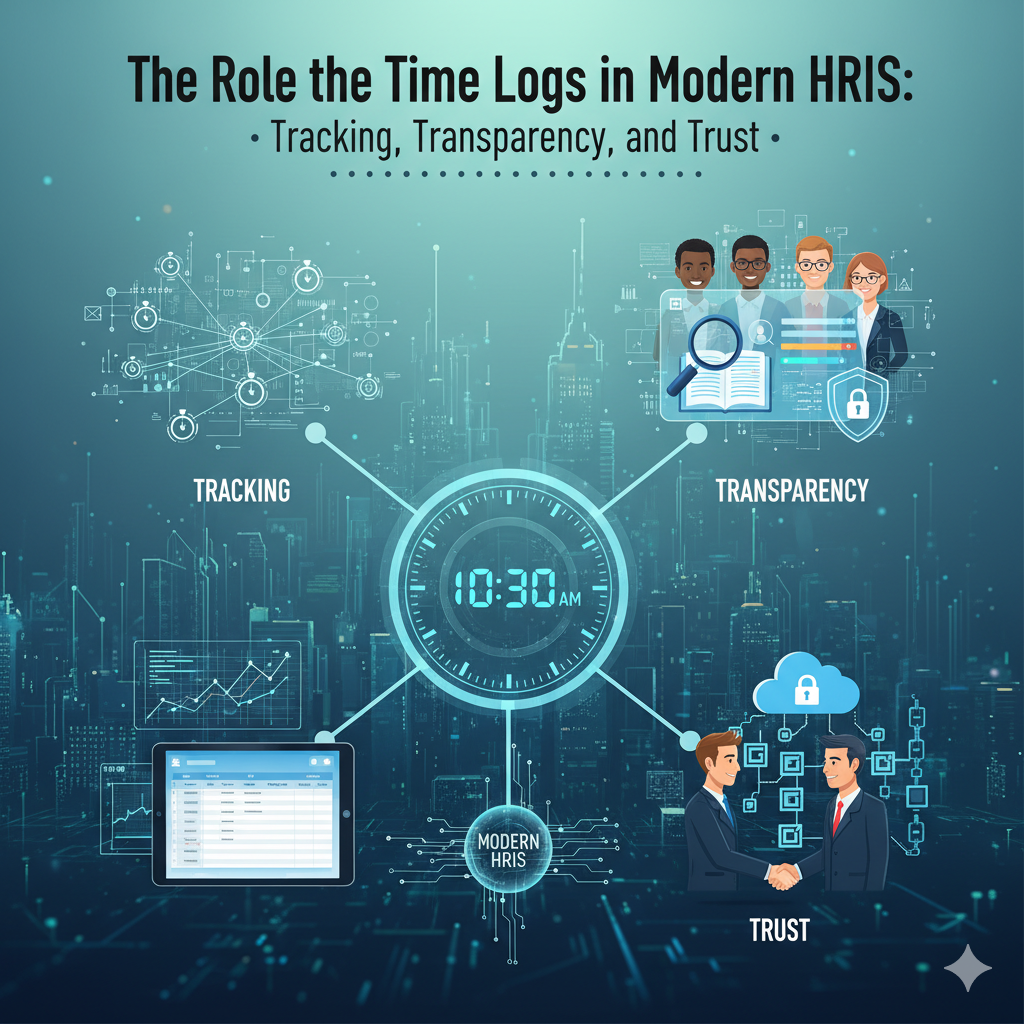In today’s fast-paced workplaces, businesses rely heavily on Human Resource Information Systems (HRIS) to streamline operations, improve employee management, and ensure compliance. One of the most powerful yet often overlooked features of an HRIS is the employee time log.
Time logs do more than just track attendance — they form the foundation of accurate payroll, fair performance evaluation, and workplace transparency. In this article, we’ll explore the role of time logs in modern HRIS, and how they build tracking, transparency, and trust in the workplace.
What Are Time Logs in HRIS?
Time logs are digital records that capture when employees start, stop, and complete their work. Within an HRIS, these logs are integrated with other HR functions such as:
- Attendance tracking
- Payroll processing
- Leave and overtime management
- Performance monitoring
Instead of relying on manual timesheets or punch cards, an HRIS automates the process, ensuring accuracy and accountability.
Tracking: Ensuring Accuracy and Efficiency
One of the main roles of time logs in HRIS is employee tracking. Businesses can:
- Monitor working hours in real-time
- Track overtime and absences automatically
- Reduce human errors in payroll calculations
- Provide managers with reliable workforce insights
This ensures that employees are compensated fairly and that resources are allocated effectively.
Transparency: Building a Fair Workplace
Modern workplaces demand transparency. Employees want to know that their efforts are recognized and recorded accurately. HRIS time logs support this by:
- Giving employees access to their attendance records
- Promoting accountability for work hours
- Offering visibility into overtime and leave balances
- Reducing conflicts over payroll disputes
Transparency not only improves employee satisfaction but also fosters a culture of fairness and openness.
Trust: Strengthening Employer-Employee Relations
Trust is the cornerstone of employee engagement. When organizations use HRIS time logs, they:
- Ensure payroll accuracy, avoiding disputes
- Protect employees from unfair evaluations
- Build confidence in HR processes
- Support compliance with labor laws
This creates a workplace where employees feel secure, knowing their contributions are recorded truthfully.
Benefits of Time Logs in Modern HRIS
Implementing time logs within HRIS offers several advantages:
✅ Improved productivity through accurate scheduling
✅ Reduced administrative burden with automation
✅ Compliance assurance with labor laws and policies
✅ Data-driven decisions through workforce analytics
These benefits go beyond simple tracking — they transform how HR interacts with employees.
Best Practices for Using HRIS Time Logs
To maximize the value of HRIS time logs, organizations should:
- Educate employees on how to use the system
- Integrate with payroll and leave management for seamless operations
- Ensure data accuracy through regular audits
- Use reports and analytics for strategic HR planning
Final Thoughts
In modern HR management, time logs are more than just records. They are a powerful tool that ensures tracking, transparency, and trust. By integrating time logs into an HRIS, organizations can streamline operations, boost employee satisfaction, and maintain compliance with ease.
If your company hasn’t fully embraced HRIS time logging, now is the time to start. The result is a workplace where efficiency meets fairness, benefiting both employers and employees.

